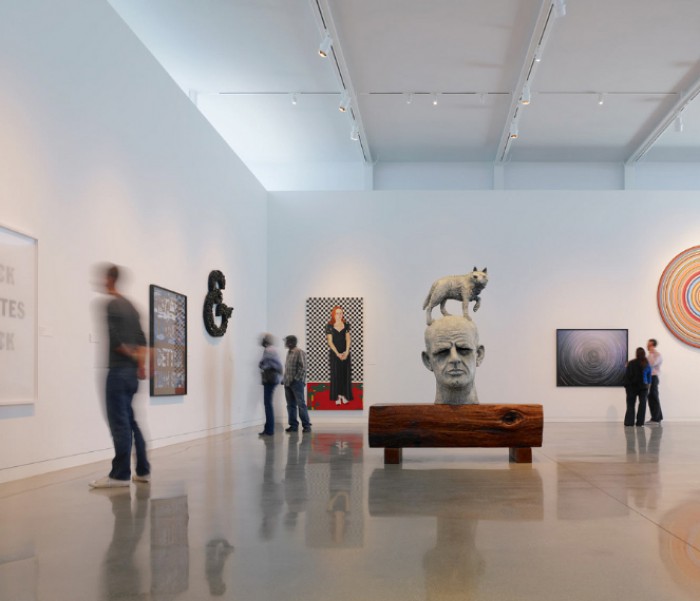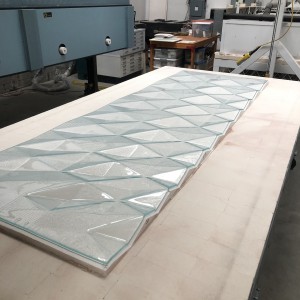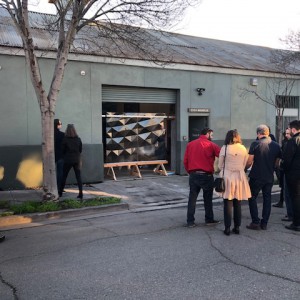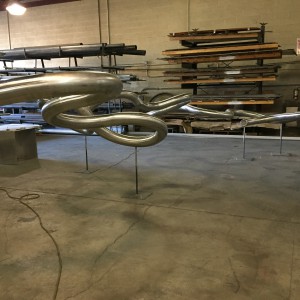IN THE STUDIO
September 24, 2019
Case study: Finding a balance between openness and protection
At Studio Winterich, our work ranges from artistic expressions in glass to custom-designed architectural glass and beyond. One architectural glass challenge involved a client who wanted a new office and display area for an art collection that included many centuries-old works.
This was an intriguing problem for several reasons. To the human eye, few things are more appealing in a building than large windows allowing for views of the outside world. In this case, the grounds around the new office were lovely, and since it was to be a business office for the curator and others, it needed to be an inviting space that inspired and motivated those who spent time there.
The fundamental challenge of the project was to illuminate the building for human use and allow everyone to enjoy the beautiful exterior views, yet protect the works of art inside. The client wished to integrate the workspace with the art display. Therefore, a complete separation of the artwork from the administrative area was not an option. The office needed to be highly secure, yet welcoming. The client especially desired that the glass selected for windows be as non-reflective as possible in order to connect the indoor and outdoor environments.
Security was a primary requirement, with staff protection and theft prevention top of mind. But equally important was how to protect the art collection from the damaging effects of light. To artwork, the light we see and indeed the entire spectrum of radiation poses a significant danger. The visible light range is one part of the spectrum, and it’s easy to understand. Most of us have seen how window treatments, carpets, and furnishings can fade from sunlight. In addition, the infrared and ultra-violet ranges can also enter a building through the glass and silently degrade the contents over time. This is troublesome and expensive enough as it relates to furnishings, but completely unacceptable when it comes to precious works of art.
Consider for a moment that a well-designed museum space has very little light entering the areas where the artwork is displayed. Special precautions are also taken after visiting hours to further reduce the possibility of light coming into contact with artwork. Yet for reasons of human health, happiness, and well-being, it’s important to have access to natural light in places where we work and live. Near the Arctic Circle, where, during the winter months, daylight hours can be as few as two or three, commercial buildings often include lighting that mimics sunlight and offer features such as faux sunlit indoor gardens. These spaces are designed to help people feel happier and less anxious through the long dark winters.
Our client’s case did not involve such extreme environmental conditions, but it was obvious that carefully controlled natural light entering the workspace would be needed, as well as views to the outside gardens. Environmental regulations needed to be met as well. This meant finding a careful balance between competing interests.
First to be addressed was the question of security. Laminated glass was an important part of the answer, but many paths were explored within and around that decision. Over two-dozen options were reviewed before the final selection of a type of glass and manufacturer that could offer the desired strength, beauty, energy performance, thermal comfort, and minimal reflectivity.
One eventual compromise was that more light would be allowed into the space than is generally felt by experts to be good for artwork. Mitigation strategies related to this decision included auto-controlled lighting scheduled to go off the moment workers and visitors departed, as well as centrally controlled blackout shades as window treatments. Set to auto-control, these shades are brought down as soon as people have left the building and remain down when the space is not in use.
Today, the office functions precisely as the client envisioned. It is a pleasant, welcoming place that celebrates the people, camaraderie and distinctive artwork within, along with the beautiful landscape outside. In conjunction with other security measures, the client’s art collection is protected and continues to thrive. The environment our client hoped for has come to fruition. This is exactly why we do what we do, and it was a pleasure getting there.
Still photo: Tim Griffith




